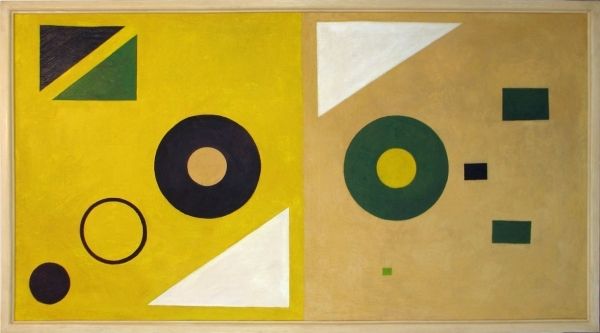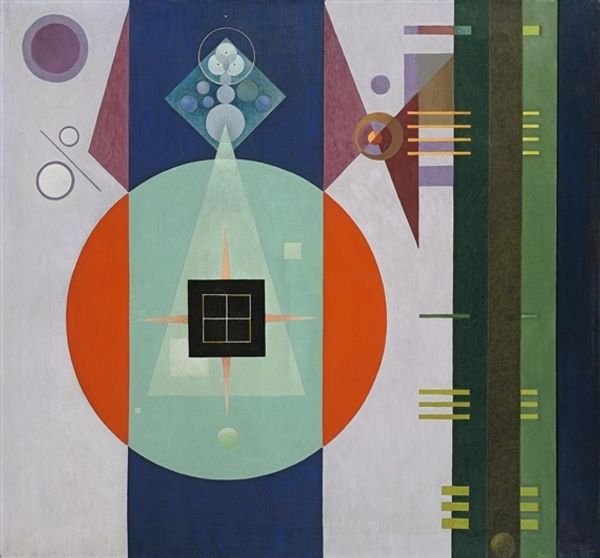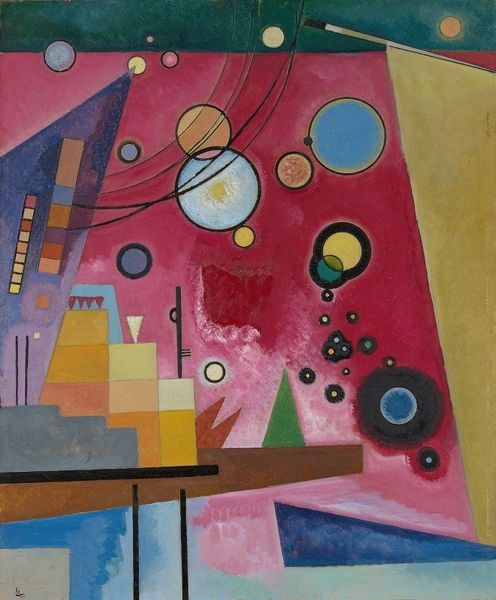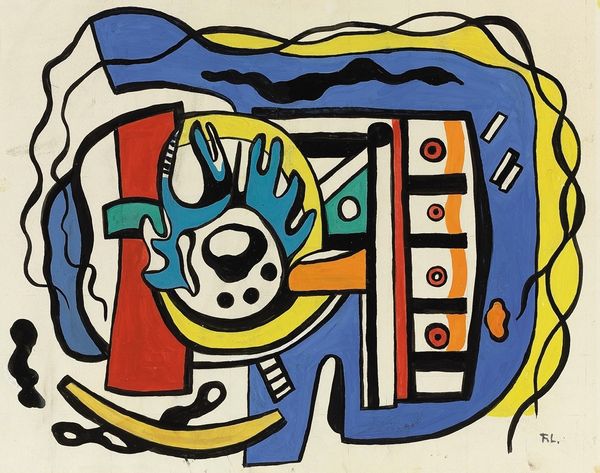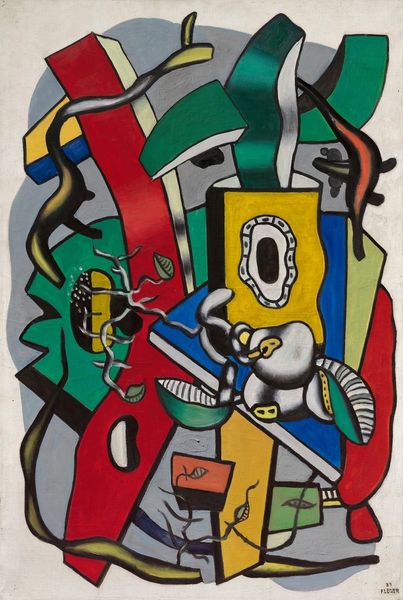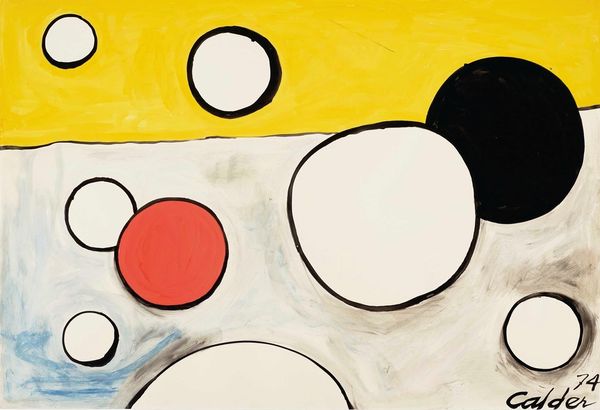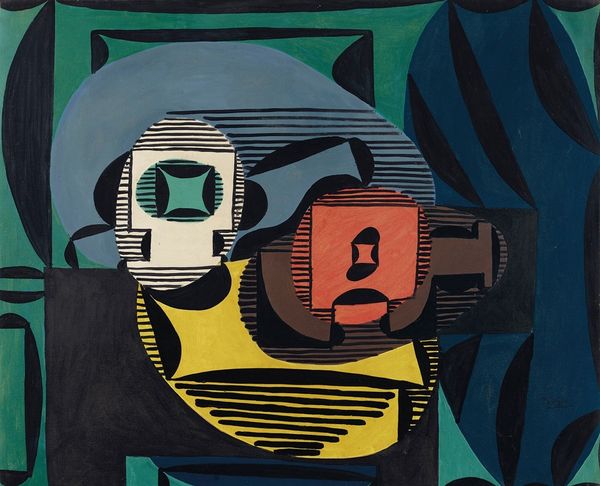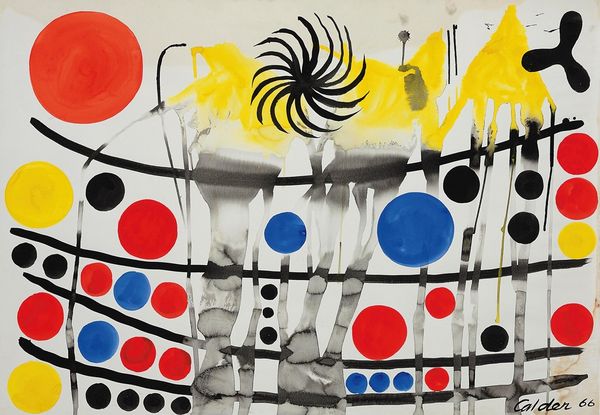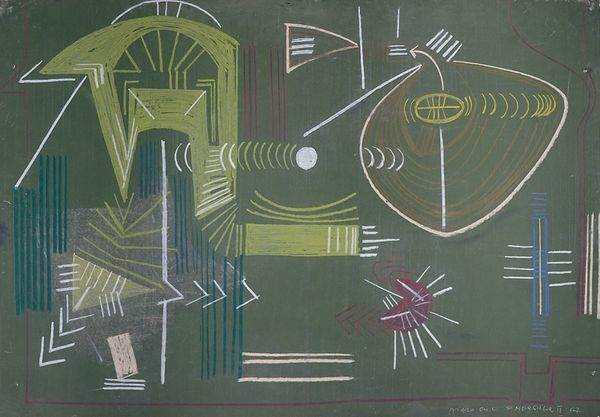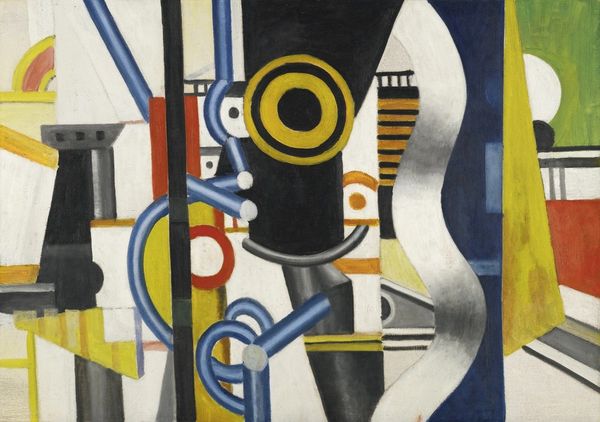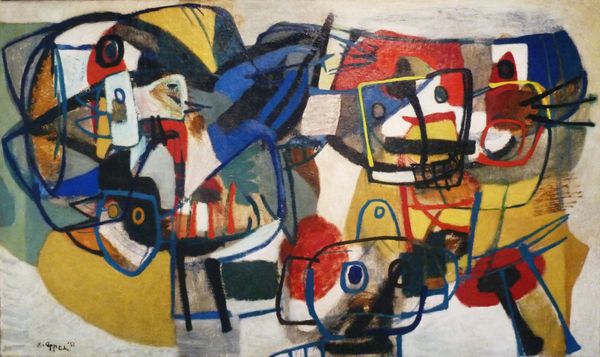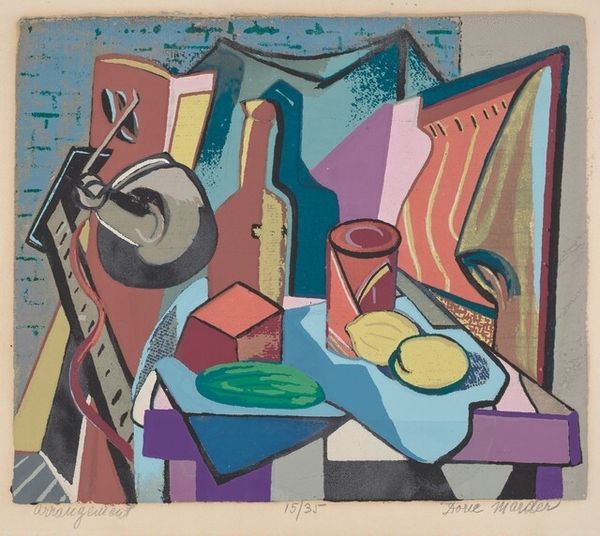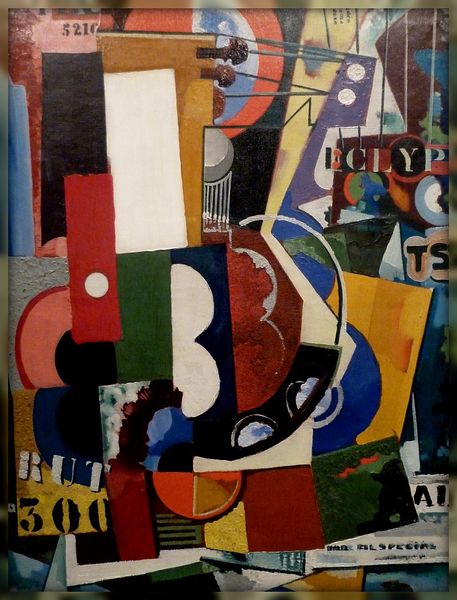
Moteur D’avion, Décoration Pour Le Palais De L’Air, Exposition Internationale Des Arts Et Des Techniques Dans La Vie Moderne, 1937
0:00
0:00
painting, acrylic-paint, mural
#
art-deco
#
painting
#
acrylic-paint
#
form
#
geometric
#
abstraction
#
line
#
mural
#
modernism
Copyright: Sonia Delaunay,Fair Use
Editor: This mural is Sonia Delaunay’s “Moteur D’avion, Décoration Pour Le Palais De L’Air, Exposition Internationale Des Arts Et Des Techniques Dans La Vie Moderne,” created in 1937 with acrylic paint. The bold geometric shapes against the softer, yellow background create an intriguing visual tension. What do you see in this piece, from a materialist perspective? Curator: I see a fascinating intersection of art, industry, and societal aspiration. Look at the scale - it was created for an exhibition celebrating technology in modern life, specifically for the Palais de l'Air. Consider Delaunay's use of acrylic, a relatively new material at the time for mural painting; it suggests a forward-looking approach, aligning the artwork itself with the cutting-edge spirit of aviation. Editor: So, the material choice and the intended location were consciously linked? Curator: Absolutely. Delaunay wasn't simply representing a subject; she was actively engaging with the socio-economic context of technological advancement. This piece asks us to consider not just *what* is depicted, but *how* and *why* it was made, and who it was meant to reach. What impact did this combination have, in your opinion? Editor: I see how she might be elevating the status of industrial production. By presenting the airplane engine as an object of artistic contemplation, she bridges the gap between the factory floor and the art gallery, blurring those traditional distinctions between the high art and craft, as you said. Curator: Exactly! We see the materials and forms of industry elevated, celebrating labor and technological advancement, yet simultaneously divorced from its function and made purely aesthetic. By emphasizing the raw components and the industrial process through her artistic lens, Delaunay challenges us to reassess the value we place on these things. It prompts to consider what role art and materiality plays within a modern technological exhibition in shaping our perception of the relationship between aesthetics, labour and production. Editor: I'm beginning to look at the artwork as more of a historical artifact that also embodies technological and socio-economical significance. Curator: Indeed, considering the materials, methods, and social circumstances behind its creation gives a new richness in understanding it, doesn't it?
Comments
No comments
Be the first to comment and join the conversation on the ultimate creative platform.
